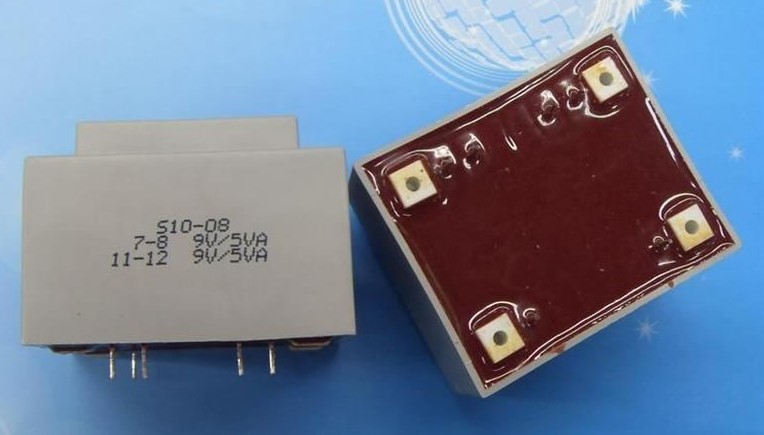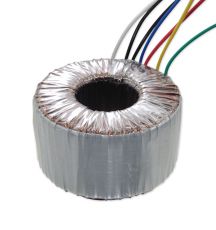NEWS
Understanding Encapsulated Transformers: A Comprehensive Overview
Release time:
Jan 14,2025
Encapsulated transformers are specialized electrical devices designed to transform voltage levels in power systems while ensuring safety and reliability. These transformers are characterized by their unique design, which involves enclosing the entire transformer unit in a protective casing. This encapsulation serves multiple purposes, making these transformers suitable for a variety of applications.
One of the primary advantages of encapsulated transformers is their enhanced protection against environmental factors. By being housed in a robust casing, these transformers are shielded from moisture, dust, and other contaminants that may compromise their performance. This feature is particularly beneficial in outdoor installations or in environments where exposure to harsh conditions is a concern. The encapsulation also aids in preventing mechanical damage, ensuring that the transformer operates efficiently for a longer period.
Another significant benefit of encapsulated transformers is their improved safety profile. These devices are designed with insulation that minimizes the risk of electrical faults and reduces the potential for short circuits. This safety feature is crucial in applications where equipment is located near personnel or sensitive machinery, as it helps mitigate risks associated with electrical hazards.
Encapsulated transformers also contribute to energy efficiency. By utilizing high-quality materials and advanced design techniques, these transformers can minimize energy losses during the voltage conversion process. This characteristic is vital for businesses and industries that demand reliable power supply while also considering energy costs. Moreover, the compact design of encapsulated transformers allows for space-saving installations, making them ideal for urban settings or areas with limited physical space.
In terms of applications, encapsulated transformers are widely used in various sectors, including renewable energy, telecommunications, and industrial automation. In renewable energy systems, for example, these transformers play a crucial role in connecting solar panels and wind turbines to the grid, ensuring optimal performance and reliability. In telecommunications, they are employed to regulate voltage levels in signal transmission, preventing disruptions in service.
Lastly, when selecting an encapsulated transformer, it's essential to consider factors such as voltage rating, power capacity, and environmental conditions. Collaborating with knowledgeable professionals in the field can help ensure that the selected transformer meets the specific needs of an application while adhering to industry standards.
In conclusion, encapsulated transformers are invaluable components in the realm of electrical engineering. Their robust construction, enhanced safety features, energy efficiency, and versatility make them a preferred choice for many applications. Understanding the benefits and operational principles of encapsulated transformers can aid professionals in making informed decisions that enhance the reliability and safety of their electrical systems.
One of the primary advantages of encapsulated transformers is their enhanced protection against environmental factors. By being housed in a robust casing, these transformers are shielded from moisture, dust, and other contaminants that may compromise their performance. This feature is particularly beneficial in outdoor installations or in environments where exposure to harsh conditions is a concern. The encapsulation also aids in preventing mechanical damage, ensuring that the transformer operates efficiently for a longer period.
Another significant benefit of encapsulated transformers is their improved safety profile. These devices are designed with insulation that minimizes the risk of electrical faults and reduces the potential for short circuits. This safety feature is crucial in applications where equipment is located near personnel or sensitive machinery, as it helps mitigate risks associated with electrical hazards.
Encapsulated transformers also contribute to energy efficiency. By utilizing high-quality materials and advanced design techniques, these transformers can minimize energy losses during the voltage conversion process. This characteristic is vital for businesses and industries that demand reliable power supply while also considering energy costs. Moreover, the compact design of encapsulated transformers allows for space-saving installations, making them ideal for urban settings or areas with limited physical space.
In terms of applications, encapsulated transformers are widely used in various sectors, including renewable energy, telecommunications, and industrial automation. In renewable energy systems, for example, these transformers play a crucial role in connecting solar panels and wind turbines to the grid, ensuring optimal performance and reliability. In telecommunications, they are employed to regulate voltage levels in signal transmission, preventing disruptions in service.
Lastly, when selecting an encapsulated transformer, it's essential to consider factors such as voltage rating, power capacity, and environmental conditions. Collaborating with knowledgeable professionals in the field can help ensure that the selected transformer meets the specific needs of an application while adhering to industry standards.
In conclusion, encapsulated transformers are invaluable components in the realm of electrical engineering. Their robust construction, enhanced safety features, energy efficiency, and versatility make them a preferred choice for many applications. Understanding the benefits and operational principles of encapsulated transformers can aid professionals in making informed decisions that enhance the reliability and safety of their electrical systems.


















